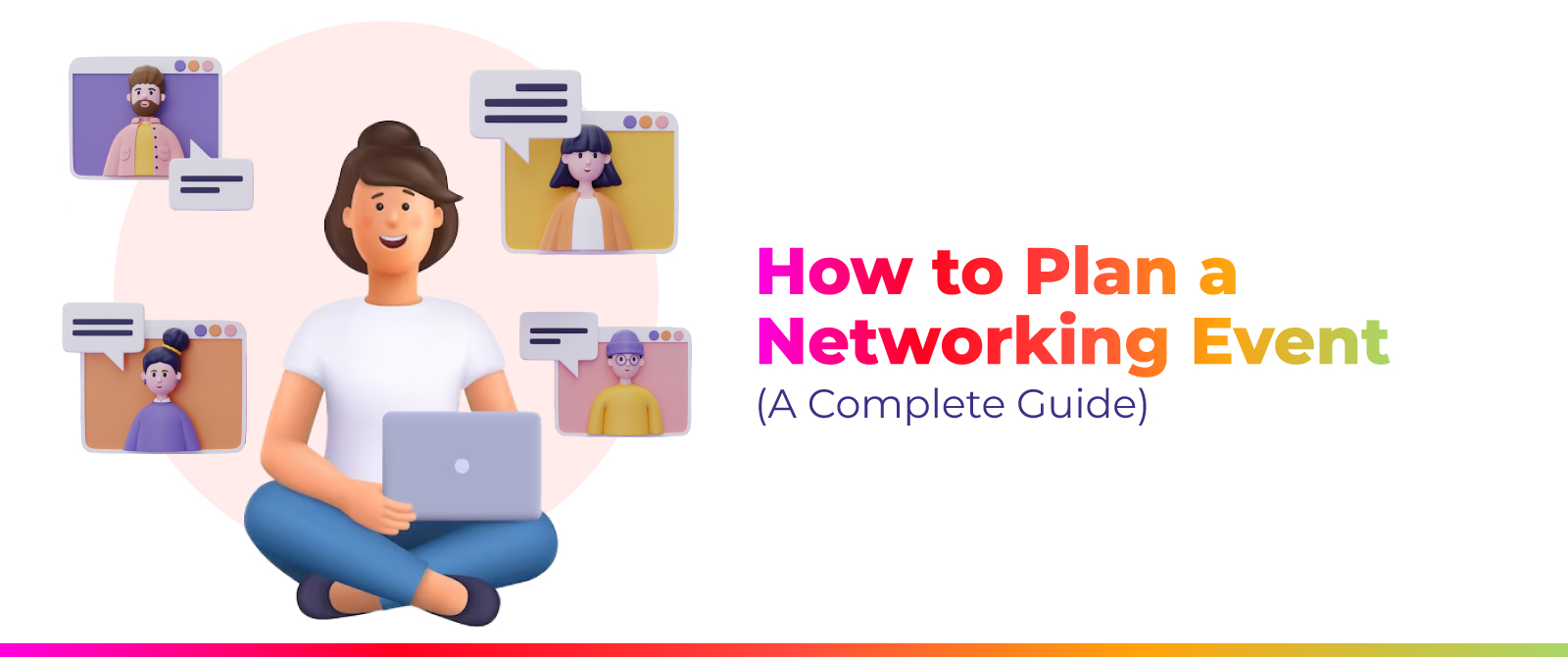Networking events play a crucial role in professional development and business growth. Whether you’re an entrepreneur or a small business owner, organizing a successful networking event can open doors to new opportunities, collaborations, and partnerships. However, planning such an event requires careful consideration, attention to detail, and strategic execution. In this comprehensive guide, we will explore the step-by-step process of planning a networking event that not only meets but exceeds expectations.
Define Your Objectives
The first step in planning a networking event is to clearly define your objectives. What do you want to achieve with the event? Common objectives include:
- Facilitating meaningful connections among attendees
- Promoting a product, service, or business
- Fostering a sense of community within a specific industry or niche
- Providing educational opportunities through workshops or speakers
Once you have a clear understanding of your goals, you can tailor the event to meet those objectives effectively.
Identify Your Target Audience
Understanding your target audience is crucial for tailoring the event to their needs and interests. Consider the industry, professions, and demographics of the individuals you want to attract. This information will guide decisions regarding venue, speakers, activities, and overall event structure.
Set a Budget
Creating a realistic budget is a fundamental aspect of event planning. Outline all potential expenses, including venue rental, catering, promotional materials, and any speakers or entertainment. Simultaneously, identify potential revenue streams such as ticket sales, sponsorships, or partnerships. A well-thought-out budget ensures that the event is financially viable and helps you make informed decisions throughout the planning process.

Choose the Right Venue
Selecting an appropriate venue is critical to the success of your networking event. Consider factors such as location, capacity, accessibility, and ambiance. Ensure that the venue aligns with the professional atmosphere you want to create and can comfortably accommodate your expected number of attendees. Many venues offer additional services such as catering and audiovisual equipment, which can simplify the planning process.
Plan the Event Schedule
Crafting a well-balanced schedule is essential to keep attendees engaged and ensure that all objectives are met. Include a mix of networking opportunities, informative sessions, and interactive activities. Consider the optimal duration for the event – whether it’s a half-day, full-day, or multi-day affair – and allocate time for registration, breaks, and meals. A well-organized schedule maximizes the value attendees derive from the event.
Secure Compelling Speakers and Presenters
Engaging speakers or presenters can elevate the quality of your networking event. Look for individuals who are experts in their field, charismatic communicators, and capable of delivering valuable insights to your audience. Reach out to potential speakers well in advance, ensuring they align with your event’s objectives and are available on the scheduled date.
Develop a Marketing Strategy
Effective marketing is key to attracting attendees to your networking event. Utilize various channels such as social media, email marketing, and industry publications to create awareness. Craft compelling content that highlights the event’s value proposition and encourages early registration. Consider offering early bird discounts or exclusive perks to incentivize early sign-ups.
Implement Registration and Ticketing
Streamline the registration process by implementing an efficient online ticketing system. Platforms offer user-friendly interfaces and allow you to customize registration forms. Clearly communicate ticket prices, any applicable discounts, and what attendees can expect from the event. Collect necessary information during registration to facilitate check-in on the day of the event.
Facilitate Networking Opportunities
The heart of any networking event is the opportunity for attendees to connect with one another. Designate specific networking sessions, icebreaker activities, or even a designated networking area to encourage meaningful conversations. Consider implementing tools or technologies that facilitate networking, such as a dedicated event app with attendee profiles and messaging capabilities.

Ensure Seamless Logistics
Detail-oriented logistics are essential for the smooth execution of your networking event. Create a comprehensive timeline that outlines key milestones leading up to the event, including setup, registration, speaker sessions, breaks, and teardown. Communicate clearly with vendors, speakers, and any event staff to ensure everyone is on the same page. Be prepared to address any unforeseen challenges with a well-thought-out contingency plan.
Collect Feedback
After the event concludes, gather feedback from attendees to assess its success and identify areas for improvement. Use surveys or feedback forms to collect insights on the quality of speakers, the overall experience, and suggestions for future events. Analyzing this feedback will help you refine your approach and enhance the planning process for future networking events.
Follow Up and Maintain Relationships
Post-event communication is crucial for maintaining the momentum generated during the networking event. Send thank-you emails to attendees, speakers, sponsors, and volunteers. Include any relevant event highlights, photos, or presentations. Additionally, consider creating a post-event resource hub where attendees can access additional materials or connect with those they met during the event. This follow-up helps solidify relationships and contributes to the long-term success of your networking initiatives.
Real-Life Examples of Successful Networking Events
Here are a few real-life examples of successful networking events that can provide valuable insights:
TechCrunch Disrupt:
TechCrunch Disrupt is renowned for bringing together startups, investors, and industry leaders. Its pitch competition has launched several successful companies. The event’s success lies in its ability to blend networking opportunities with educational sessions and a highly publicized startup competition.
HubSpot’s INBOUND:
HubSpot’s INBOUND is known for its inbound marketing focus and impressive speaker lineup. The event encourages networking through organized meetups, interactive sessions, and a variety of networking lounges. Attendees often praise the event for its combination of educational content and networking opportunities.
Dreamforce by Salesforce:
Dreamforce combines a massive expo with in-depth sessions and networking opportunities. The success of Dreamforce comes from its focus on customer success, creating a platform where attendees can learn, share insights, and connect with industry professionals.
TEDGlobal:
TEDGlobal is renowned for its powerful talks, and its success extends to networking opportunities. Attendees, including thought leaders and influencers, benefit from the intimate and intellectual atmosphere, fostering connections that often lead to collaborative projects and initiatives.
CES (Consumer Electronics Show):
CES is one of the largest global technology expos, attracting professionals from various industries. The event’s success in networking stems from its diverse exhibitors, specialized pavilions, and networking events tailored to specific sectors within the tech industry.
Pitfalls in Event Planning and How to Sidestep Them
Planning a successful networking event can be a rewarding experience, but it comes with its own set of challenges. Let’s explore some common pitfalls and practical solutions:
Ignoring Budget Constraints:
Pitfall: Going over budget can put a strain on your resources and limit the success of your event.
Solution: Carefully outline your budget, considering all possible expenses and revenue streams. Be realistic about what you can afford and explore cost-saving options without compromising the event’s quality.
Inadequate Venue Selection:
Pitfall: Choosing a venue without considering capacity, accessibility, and ambiance can lead to discomfort and dissatisfaction among attendees.
Solution: Thoroughly assess potential venues, considering the number of attendees, location, and overall atmosphere. Ensure the venue aligns with the professional vibe you want to create.
Poorly Defined Objectives:
Pitfall: Failing to clearly define your event objectives can result in a lack of focus and a diminished overall impact.
Solution: Clearly articulate your goals for the event. Whether it’s fostering connections, promoting a product, or providing education, a well-defined objective will guide your planning decisions and ensure a more purposeful event.
Ineffective Marketing Strategy:
Pitfall: Insufficient promotion can lead to low attendance and diminish the success of your networking event.
Solution: Develop a robust marketing strategy that utilizes various channels, including social media, email marketing, and industry partnerships. Craft compelling content that highlights the unique value of your event and encourages early registration.

Insufficient Networking Opportunities:
Pitfall: Neglecting to incorporate structured networking sessions or activities can result in missed opportunities for meaningful connections.
Solution: Designate specific times for networking, include icebreaker activities, and create designated networking areas. Encourage interaction by providing tools or technologies that facilitate networking, such as a dedicated event app with attendee profiles.
Ignoring Attendee Feedback:
Pitfall: Neglecting to gather feedback post-event may result in missed opportunities for improvement and future success.
Solution: Implement feedback mechanisms, such as surveys or feedback forms, to collect insights on the event’s success and areas for improvement. Use this feedback to refine your approach for future networking events.
FAQs
Organizing a networking event provides a platform for professionals to connect, share ideas, and build valuable relationships. It can lead to business opportunities, collaborations, and personal growth, making it a powerful tool for career and business development.
Craft a well-balanced schedule by including a mix of networking opportunities, informative sessions, and interactive activities. Consider the optimal duration for the event and allocate time for registration, breaks, meals, and other key activities.
Common objectives include facilitating meaningful connections, promoting products or services, fostering industry community, and providing educational opportunities. Clearly defining your goals helps tailor the event to meet specific objectives.
Designate specific networking sessions, icebreaker activities, or a dedicated networking area to encourage meaningful conversations. Consider implementing tools that facilitate networking, such as a dedicated event app with attendee profiles and messaging capabilities.






